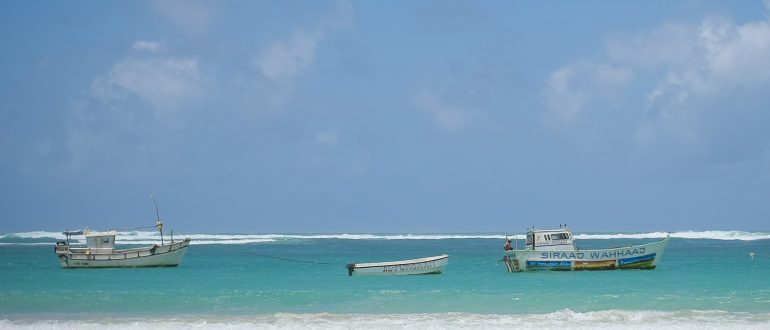
The Cost of Political Tension in Somalia
Disclaimer: The views and opinions expressed in this article are those of the author and do not necessarily reflect the opinion of CISS or its members.
Somalia, a land of poets, is scarred by decades of hostility and political instability especially after 1991 when the head of state, Said Barre was ousted. Additionally, Somalia is home to armed clans and groups who have significant influence and power as compared to the regime in power. Whereas the federal government dominates only a section of Somalia territory, it is dependent on AMISOM, the AU peacekeeping troops, to tackle the al-Shabaab militia that emerged out of the power vacuum.
With the Al-Shabaab transcending national borders it is a security risk to not only Somalia but to its neighbors with porous borders predominantly Kenya’s north-eastern towns, which have been victim of violent attacks. The group is known for exploiting lapses in the security apparatus of states as governments divert resources to tackling the locust invasion amidst the coronavirus pandemic. Economic stress triggered by Covid-19 has fuelled rage, which the group capitalizes to breed friction, recruit new followers, and justify their actions thereby destabilizes the region.
The pursuit for national interest has also exposed the AU mission to deficiencies in command and control and the spat between the two key troop contributors (Ethiopia and Kenya) has aggravated the situation. Although Ethiopia and Kenya avoid a direct clash, their interests raise alarm as to the extent they might go to militarily to support their respective Somalia allies (Crisis Group, 2020).
Kenya-Somalia Clash
Somalia’s high dependency on Kenya cannot afford to spiral into conflict between the two countries. This article will deduce the root cause of Mogadishu’s and Nairobi’s foiled relation and Somalia’s instability based on its political divide.
Mogadishu and Nairobi’s pandora box can be traced back to the territorial dispute between the two nations and Nairobi’s alleged involvement in the internal affairs of Mogadishu. One may be puzzled as to what motivates the territorial feud and Kenya’s supposed engagement in Somalia’s internal affairs?
Anchored on a perimeter extension disagreement, the rift is kindled by the Indan Ocean which holds an opulent 160,580-square-kilometres triangular shaped oil and gas zone claimed by the two states. Although Kenya retains Jubaland as a buffer between it and the Al-Shabaab militia, discord continues to flare over Nairobi’s alleged involvement in Mogadishu’s internal affairs and its pretext for this particular interest. The divergence is a grave challenge to AMISOM’s effectiveness especially with the key contributors supporting opposing parties. Somalia has furthered its accusation on the destructive nature of the Kenyan forces which has resulted in the destruction of the telecommunication apparatus in zones where they have been stationed. Kenyan forces are also accused of being party to the illicit coal and sugar dealing in the Kismayo port and equipping radicals to attack the lower Somalia townships.
These clashes ignite a flexing of muscles between the two nations’ militaries along the borderline with Somali’s troops stationed at Beled-Hawo. In opposition, troops from Somalia’s Jubaland region, Nairobi’s ally, are based in the north-eastern town of Mandera. Seen as a window of opportunity, Jubaland’s troops positioned in Mandera have orchestrated a cross-border offensive in Beled-Hawo killing dozens of civilians. As a consequence, the incident has been criticized by locals of Mandera who have protested against the attack and pushed for Jubaland’s forces withdrawal from their locality in order to safeguard them from external attack (Yusuf, 2020).
Somalia’s internal fall out
Somalia’s political divide and stability is hinged on the clan system. It is due to this that Mogadishu is on the brink of clan-based conflict which will unveil the political polarization that plays a significant role in politics and one that might trigger a degree of volatility. The deadlock between the president Mohamed Abdullahi “Farmajo”, and Jubaland’s leader, Sheikh Ahmad Mohamed “Madobe”, is prompted by the government’s veto to recognize the vote of August 2019 where Madobe secured a victory for a second term. These tension also signifies the incompatibility over power allocation between Farmajo and Madobe. The differences stir up conflict through clan coalitions that dictate the political arena. To circumvent another humanitarian crisis due to armed conflict, reconciliation is a prerequisite and failure to adhere to it grants the Al-Shabaab insurgents an upper hand which would jeopardize the region’s stability (Crisis Group, 2020).
With the current president Farmajo anticipating his re-election, the upcoming election is one to watch out for. However, the president’s quest to solidify his second term is one that is bound to hit a roadblock as his opponents strive to thwart his re-election. With opponents like prior presidents, Sharif Sheikh Mohamud (2009-2012) and Hassan Sheikh Ahmed (2012-2017) capable of mobilizing clans, a fall-out is more likely to be seen. Jubaland and Puntland leaders are equally determined to set the seal on the ousting of Farmajo (Crisis Group, 2021). With an already divided clan-based system, violent conflict is a disaster in waiting and a clash between the centralised and regional forces seems to be inevitable.
Unwavering fear of a constitutional crisis is a recipe for violence that cannot be overlooked. Certainly, the current unsettled grievances are conducive to benefit a selected few middlemen. If federal and regional authorities fizzle out and overlook the electoral model agreement from Dusamareb, Somalia will continue to be situated in a peculiar phase where the head of state and parliament have no authority. However, if a consensus is reached, the bargain over the election model could equally fall to pieces swiftly as witnessed in the September 2020 election road map (Hairsine & Odowa, 2021).
Delayed elections can be ascribed to a toxic dynamic between the regional states and the federal government. The electoral system on the other hand is one marred by poorly uncoordinated preparations that has seen the elite lock horns over the management of electoral procedures as they are the easiest to manipulate. Farmajo’s opponents refuse to acknowledge the newly formed federal and state electoral committees due to the positioning of Farmajo stalwarts who are likely to alter results. The deadlock is threatening the election’s credibility and if not ironed out could erupt in violence (Crisis Group, 2021).
If Somalia is able to record a peaceful election, the president ascending to power inherits a legacy of political division tainted by levels of volatility. Though a tip of the iceberg, political divide rings alarm bells for urgent federal and regional government reconciliation. However, the current administration has inflated the fault line by its failure to unify regional authorities and extending its overall influence. Whereas the clan system undermines any efforts of conflict resolution, there is need for dialogue and consensus building. Attaining this equilibrium therefore requires constitutional and electoral review, equal allocation of power and resource sharing.
Food for thought
The conflict between Nairobi and Mogadishu undoubtedly transcends national borders thereby spreading into the entire Horn of Africa. As the hegemonies keep up the fight for affluence, trade, transport, security, health and education continue to pay the price.
While Kenya and Somalia remain intertwined on many levels, the deteriorating relationship is a lose-lose situation since no side is benefiting. Is the political cycle therefore to blame for the feuds? And should Kenya’s close ties with Jubaland through regional president Madobe standing as opposition candidate, be interpreted as Kenya’s way of supporting Somalia’s opposition thereby fostering the fragile relation?
Finally, as Al-Shabaab, utilizes this spat to its advantage to flex its muscles, political tensions are likely to escalate and the fate of the Somali refugees harboured in the Dadaab and Kakuma camp and the Somali population will remain sealed in a labyrinth.
References
Hairsine, K. & Odowa, M. (2021). Somalia holds emergency talks over election crisis. Retrieved from: https://p.dw.com/p/3oiO7
International Crisis Group. (2021). Stabilising Somalia for Elections and What Comes After. Retrieved from: https://www.crisisgroup.org/africa/horn-africa/somalia/stabilising-somalia-elections-and-what-comes-after
Isilow, H. (2020). Somalia, Kenya diplomatic row unfortunate: Experts Somalia’s decision to snap diplomatic ties with Kenya to affect ordinary citizens, believe experts. Anadolu Agency. Retrieved from https://www.aa.com.tr/en/africa/somalia-kenya-diplomatic-row-unfortunate-experts/2082752
Yusuf, M. (2020). Residents of Kenya-Somalia Border Area Fear Conflict Amid Diplomatic Tensions. Voice of America. Retrieved from: https://www.voanews.com/africa/residents-kenya-somalia-border-area-fear-conflict-amid-diplomatic-tensions

Marion Esm’eralda
Marion Esm’eralda is an honors graduate from the Higher School of Economics where she majored in Public Policy and developed an interest in anti-corruption policy. Prior to this, Marion graduated with a Bachelor’s degree in International Diplomacy and Disaster Management where she specialized in peace and conflict studies. During and after her bachelors’ programme, she partnered and volunteered with various organizations like the African Medical and Research Foundation (Amref) and the Red Cross Society. She has also been part of girl child initiatives and non-communicable diseases campaigns.
